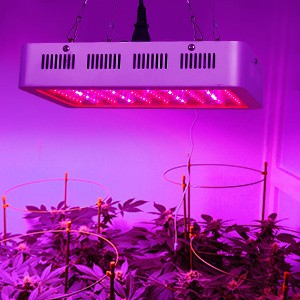
Whether it is for the health benefits or simply for ornamental purpose, having plants at home is great. However, as the temperature plummets, taking care of them could be tricky and frustrating, especially if you have invested so much on them.
Below are what you can do to guarantee its survival during the holiday season.
1. Improve the humidity.
Due to the heating equipment we use during winter, the humidity level in our home drops to as low as 10 percent. Unfortunately, almost every plant prefer higher humidity.
Investing in a humidifier is a great move, assuming you do not have it. However, if it doesn't have a space for your restricted finance, you can use put your plants at the bathroom, where the moisture is usually high due to the hot shower.
You can also use the old trick of putting the potted plants above a tray of water.
If you have many plants, you can also go for grouping them together even if it doesn't look appealing. Plants naturally transpire, so clustering them in a group will allow them to maximize the moisture.
You can also sprinkle water but you need to do it multiple times in a day since this is just a temporary relief.
2. Water the plants less frequently.

Having low humidity doesn't mean the plant needs to be watered more. It is the other way around, as plants normally go dormant (think of how some animals hibernate) during winter. Too much water will "drown" the plant and the root will rot.
To check if the plants need to be watered, poke the soil to check its moisture. If the dry soil is at least two inches deep, time to put water. Make sure you use the temperature similar to the room's so not to "shock" the roots by the sudden changes.
3. Be aware of its location.

Plants require a certain temperature to survive, so make sure that they were not in the cold area or even in the hot area, like near the heater.
Additionally, putting them in a place where they could be exposed to sunlight is good. You can create plant boxes near the windows. However, make sure that your window is insulated and has cracks or slits where the chilling wind can enter. Also, removed them away from the window during chilly nights.
If you care about its appearance a lot, you should rotate the pot at least once a day so that the branches will not bend toward the light source.
If you do not have any good places for them, you can buy supplemental lights.
4. Provide fewer fertilizers.
Since plants normally do not grow during winter, you need to feed them less. Put mulch only during early spring when signs of growth, like new leaves are showing up, have shown up.
5. Avoid repotting during winter
Just like hibernating animals, plants are also conserving their energy during winter. By transferring them to another pot on this period, you can possibly shorten its life as it might not be able to repair itself.
6. Beware of winter plant pests
Plants get sick too, and being infested is a common symptom. To prevent infestation, regularly clean your plant's leaves through dusting them off. Dust accumulation normally hinders them from absorbing sunlight, resulting in less energy. It can also attract diseases and even pests.
© 2025 NatureWorldNews.com All rights reserved. Do not reproduce without permission.





